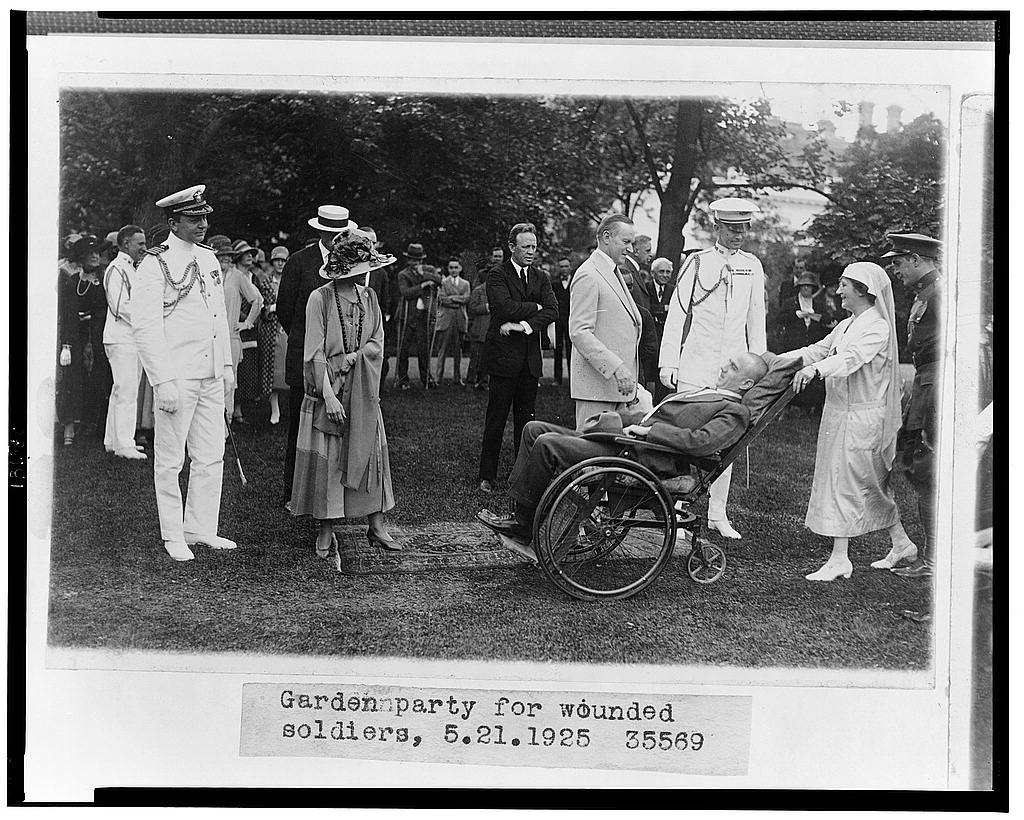
Coolidge lays a wreath at the Tomb of the Unknown Soldier with Secretary of War Davis and Secretary of the Navy Wilbur, November 1924
Looking back on the formal declaration of war and entrance into armed engagement against Germany on this day in 1917, Coolidge was filled with a genuine admiration for those members of the United States Army – and all who put on the uniform – who, serving so necessary a mission, represent something far more important than brute strength or militarism abroad. While so many nations around the world project military might for conquest, Americans pursue their ideals through service. Engineering, medicine, constitutional government have all been advanced here and around the world by those who have taken up the sacrifice of service in the Armed Forces. America’s proud military heritage reminds us that, when all has been said, it is law, not violent and unprincipled men, that reigns and peace cannot be achieved without a “preparation for national defense.” As if rescuing Europe were not enough proof, the relief dispatched by President Coolidge to help those suffering from the earthquake and tsunami which hit Japan in September 1923 was testament enough to America’s commitment to the ways of peace not the march of militancy.

View from the Imperial Hotel, the only hotel to survive, of some of the destruction in Tokyo in 1923. It is estimated over 140,000 people died and yet Coolidge helped raise $12 million (what would be $165 million today) through the Red Cross for victims of the disaster. One American Navy officer would be presented with the Medal of Honor by President Coolidge for his rescue of a woman trapped (with both legs broken) in the Grand Hotel, after carrying her to safety just before the building went up in flames.
After all, America’s military is not to be a repository for the thugs and miscreants or a social experiment for the advancement of abnormality. The Armed Forces comprise our sons and daughters, Americans who love their country and respond with courage and conviction when its institutions, traditions, and interests are under attack. These men and women voluntarily sacrifice everything because they know American liberties are worth such a price. This is why our leaders should adhere to the same careful regard for those institutions when they deploy precious lives to the defense of American interests, not on vague missions to save democracy, but to protect our people, their property and their interests. As the former President said on April 4, 1931,
“To those who recall how important the United States Army appeared on the 6th of April, 1917, this anniversary will seem a fitting time for the nation to give some thought to its military establishment. Human nature takes things for granted that have long existed. We forget that the constant effort and care of some one makes them so. In spite of all our other precautions, the peace we enjoy still has in it a large element of preparation for national defense. No self-respecting people desiring to live under a reign of law at home and abroad can afford to neglect their army.
“Public security depends to a large extent on the knowledge that the government has power to enforce its decrees.
“Our own Army is not entirely an instrument of war. It serves in peace. The Engineering Corps built the Panama Canal and supervises Mississippi flood control and river and harbor improvement. The Medical Corps overcame the scourge of yellow fever. For many years the War Department administered our insular possessions. The people can look on the past and present of their Army, its distinguished soldiers and its great accomplishments, with satisfaction and confidence. We have an Army that is not militaristic.”

